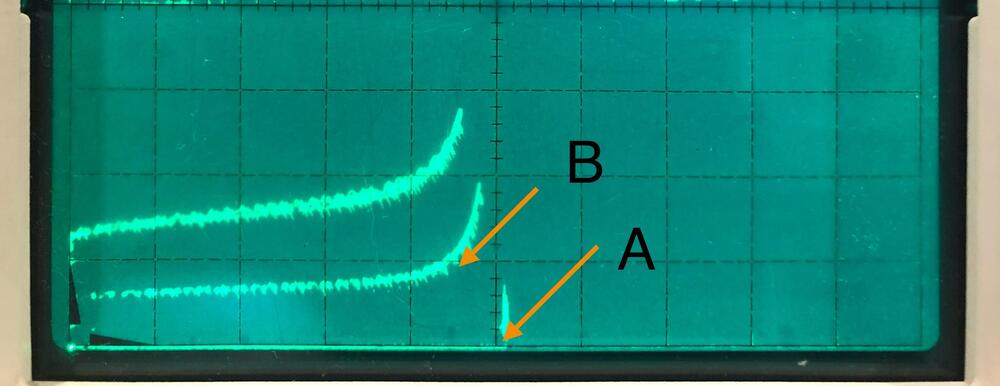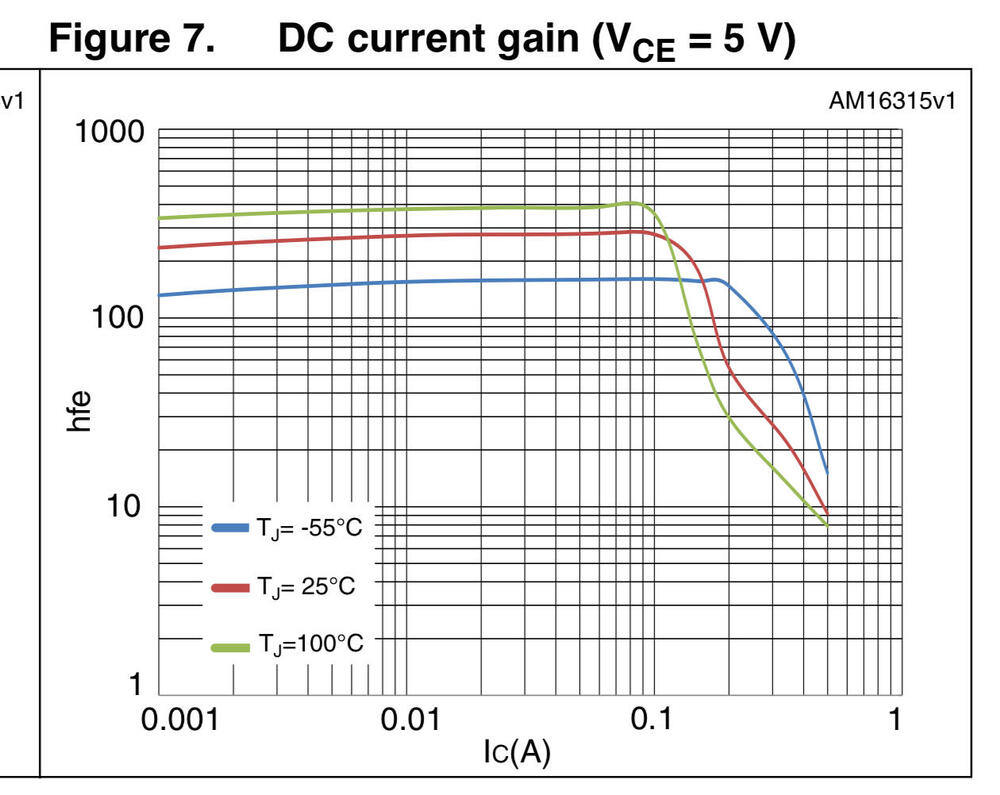
simmconn
Returning Member-
Posts
171 -
Joined
-
Last visited
-
Days Won
2
simmconn last won the day on January 26 2023
simmconn had the most liked content!
Recent Profile Visitors
The recent visitors block is disabled and is not being shown to other users.
simmconn's Achievements

Limited Edition Bronze Participant (4/6)
220
Reputation
-
I was just pointing out, as how Q12 is connected today, it’s not doing what it is supposed to do. The output should be connected to gate instead. I remember last time you recommended TTC004B as a replacement for the PZTA42 (different package). We just need something with a flat hfe-Ic curve to, say >100ma at VCE=10V.
-
Q12 in the PSU seems full-on and not doing much if anything. I noticed that the 2N3904-based current limiter is not there. Many people say it is too slow, not realizing that it is protecting the passing SiCFET at every power up, before the opto coupler soft start switch is released. On the other hand, if the SiCFET decides to give up, nothing can hold it back anyways. The 2N3904-based current limiter should not be the one to blame. The amp section still uses PZTA42 despite the linearity issue we found earlier and better options are available. The STN9360 although is specified with a 600V VCEO, its curve shows onset of breakdown at a lower voltage. I didn’t take a picture with the STN9360, but the one below is similar. Technically the breakdown voltage is specified at point A, but you wouldn’t want to operate the part at point B, even though that’s still “within spec”.
-
Megatron Electrostatic Headphone Amplifier
simmconn replied to kevin gilmore's topic in Do It Yourself
Adjust R31 or R32 for 2.5V, and then adjust R33 or R34 for 5V. They should be independent as long as you do it in that order. Take into account of the wire resistance when measuring voltage especially in the 2.5A case, when you get into mV of accuracy. -
Megatron Electrostatic Headphone Amplifier
simmconn replied to kevin gilmore's topic in Do It Yourself
A lot of those filament regulators focus on reducing the differential mode noise. I think the DHT would be more sensitive to common mode noise, because the filament itself is the cathode in the signal path. Depending on the circuit topology, you may or may not be able to bypass the noise to ground. The common mode noise starts from the secondary windings on the power transformer, and gets more complicated with the switching regulators noise riding on top of it. It depends more on the implementation than the pretty numbers in the datasheet. -
Megatron Electrostatic Headphone Amplifier
simmconn replied to kevin gilmore's topic in Do It Yourself
It’s a pretty ingenious design. It takes advantage of the fact that a cold filament draws more current than when it’s hot and thermally stable. The circuit outputs 2.5V by default at no load in case someone does a hot-plugging. An 2A3 draws more current than 2.5A when cold, and gradually drops down to 2.5A. The output is maintained at 2.5V. If it’s a 300B instead, the current would drop further, say, below 1.6A. The circuit would then switch to 5V, and the threshold also doubles to 3.2A. There could be some brief back and forth, but as the filament gets hotter, the current will drop further towards 1.2A while the circuit stays at 5V output. It should be okay for a DIYer to build a clone for his/her own use, but integrating the same in a “DIY” unit that sells for an atrocious price at “the marketplace” would probably be a different matter. -
Megatron Electrostatic Headphone Amplifier
simmconn replied to kevin gilmore's topic in Do It Yourself
Looking at the CTR curve I would choose the operating range between 1 to 2mA of If. Since the nominal CTR is 20%, the phototransistor side would be designed around 200uA to 400uA. Adjust the resistors such that the desired normal bias voltage is centered around this range. The phototransistor could operate off the 110V supply if you don’t need the full 510V range for the bias adjustment (why would you?). -
I can contribute two data points. Out of the two X9000 era Stax plugs I measured, the pin diameter is within 2.36+/-0.004mm, and the pin circle diameter is about 10.95mm. The pins are not perfectly parallel to each other, and the pin circle diameter is slightly larger at the tips.
-
Megatron Electrostatic Headphone Amplifier
simmconn replied to kevin gilmore's topic in Do It Yourself
Interesting design! I’d be a bit worried about the thermal and mechanical side of things. The thermal resistance of the heatsink this size is probably going to run above 5C/W without forced air flow. It is going to run too hot to touch at 350V to 400V/20mA (7 to 8W). With 3C/W theta JC on the 10M90S, there is still margin on the die temperature. If I were to design a PCB to be plugged into a tube socket with soldered pins, I’d use slightly undersized pins and whatever copper I can get for adhesion to the board (double layered board with plated-thought holes in 2-mm or thicker PCB), especially if the counterpart is the unforgiving “modern” tube sockets with tulip type spring contacts. Last but not least, when the whole thing gets very warm, I’d use materials with higher working temperature such as ASA or ABS. PLA is probably not going to last very long. -
I guess the machine shop cheaped out and didn’t use 5-axis tool paths for those steep facets. Otherwise we wouldn’t see the tool marks after heavy sandblasting. This should really have been a cast part. No objections from the environmentalists from the other side of the pond? I’m surprised.
-
Thanks. I guess nobody likes to receive fake parts. But if it’s a low-current, 1200V or better grade IGBT, its characteristics can come very close to the SiCFET we use in threshold voltage, transconductance and even input/output capacitance. It might actually work, at least in the GRHV. I’d be interested to try it out. Well, we should probably stop talking about SicFET or IGBTin this thread, as they are irrelevant to T2.
-
You haven’t answered my question how you determined that the part is a fake (other than from the appearance).
-
If you use them in a constant current source, the Vbe-Ic curve (figure 10) is probably more important than hFE. If you don’t have ways to measure, pick two that are closest in hFE for each channel and hopefully they come close in other parameters as well. If you ask me, I always order at least 2x more than the BOM qty and match them on a curve tracer at or near the actual operating point. The bigger the pool, the more likely you’ll end up with well matched pairs.
-
If I were to choose from a well executed raster image logo in the marking and a badly burned vector one, I’d opt for the latter in a heartbeat. I’ve explained the reason and would not repeat here. For the hFE, you need to know the Ic and Vce your testing was performed at, in order to make a meaningful comparison with the numbers in the datasheet. If you don’t know, measure them. The datasheet says minimum hFE is 170 at 25 degree C, Ic=-1ma and Vce=-5V. From the chart you can see hFE goes slightly up from Ic=-1ma to -10ma and then to -20ma before it starts to drop after Ic=100ma (the red line). If your sample tests at hFE=150 between Ic=-1ma and -10ma, it’s below spec and would be a reject by the factory. You can see the red line is well above 200 and approaching the 300 line, so 340 is not a surprise. +/-20% is considered normal variation. Why would they specify min hFE at only 120 at Ic=-20ma? It could be a simple mistake, or indicating that the hFE could drop as early as Ic=-20ma, unlike what the typical curve suggests, which is a bad news for circuit designers (not applicable for our applications). Nevertheless, sandbagging would not get them into trouble anyways, if you know what I mean. I could go on and on and brag about my affiliation with the semiconductor industry, but let’s keep the personal information out of this discussion. If you think my comments make sense, think about it. Otherwise, just take it with a grain of salt.
-
How do you determine if a part is a fake? If a part with a poorly done or a suspiciously looking marking meets all the specifications of the genuine part that you can verify, would you still declare it a fake?
-
Okay. Please do report back when you hear from Mouser, then I’ll explain why I think hFE of 341 is more reasonable than 150 for an STN9360.






